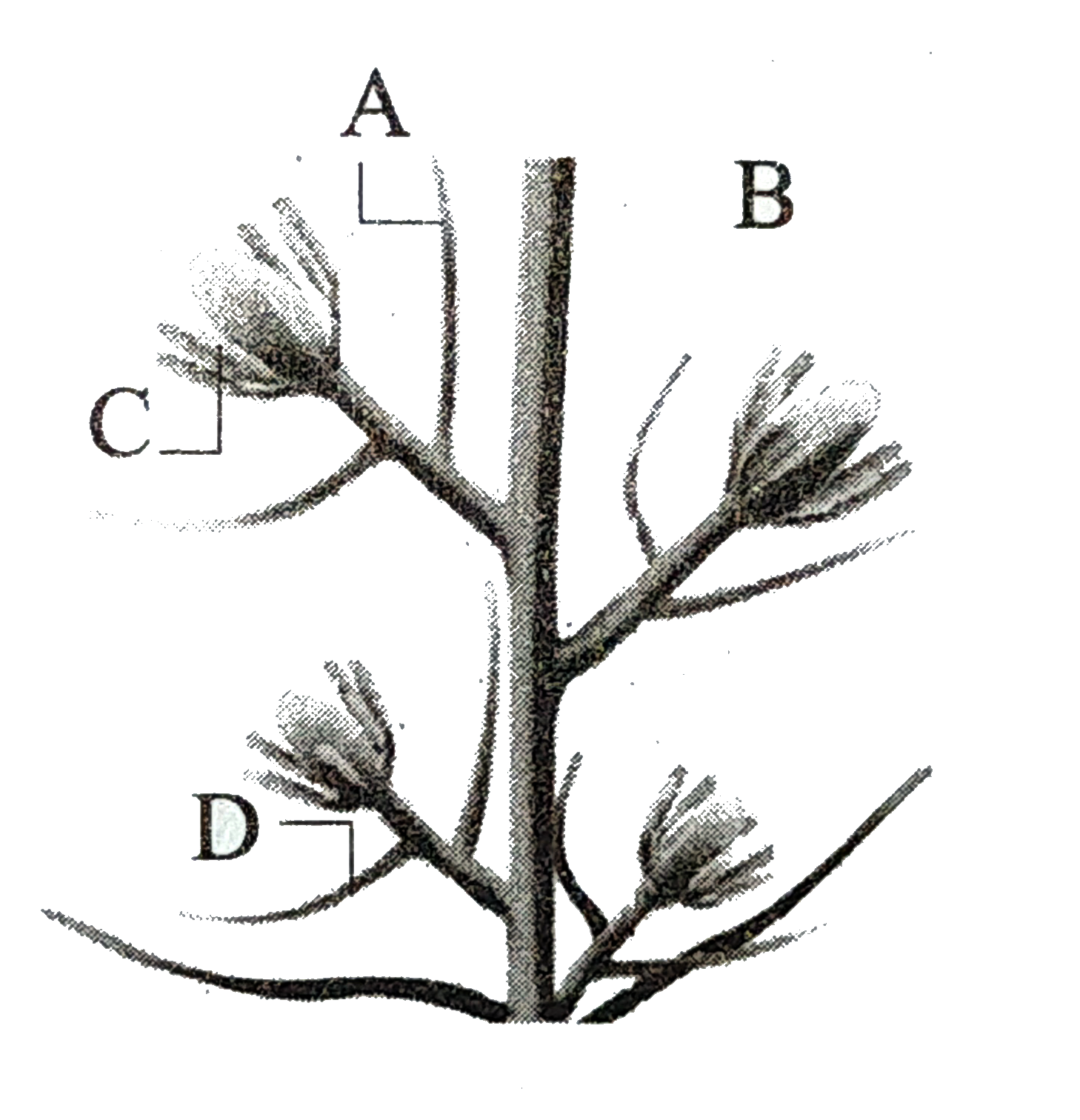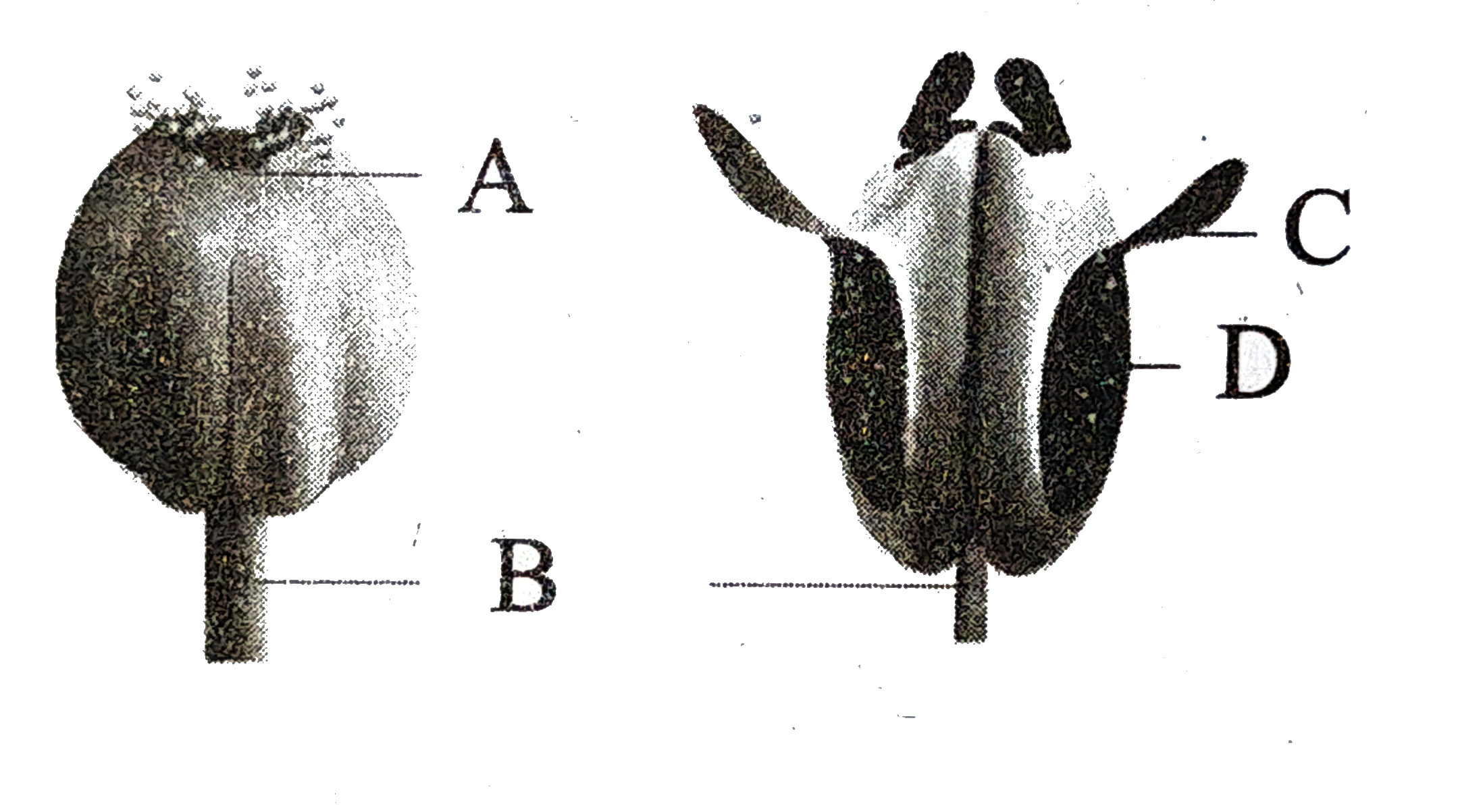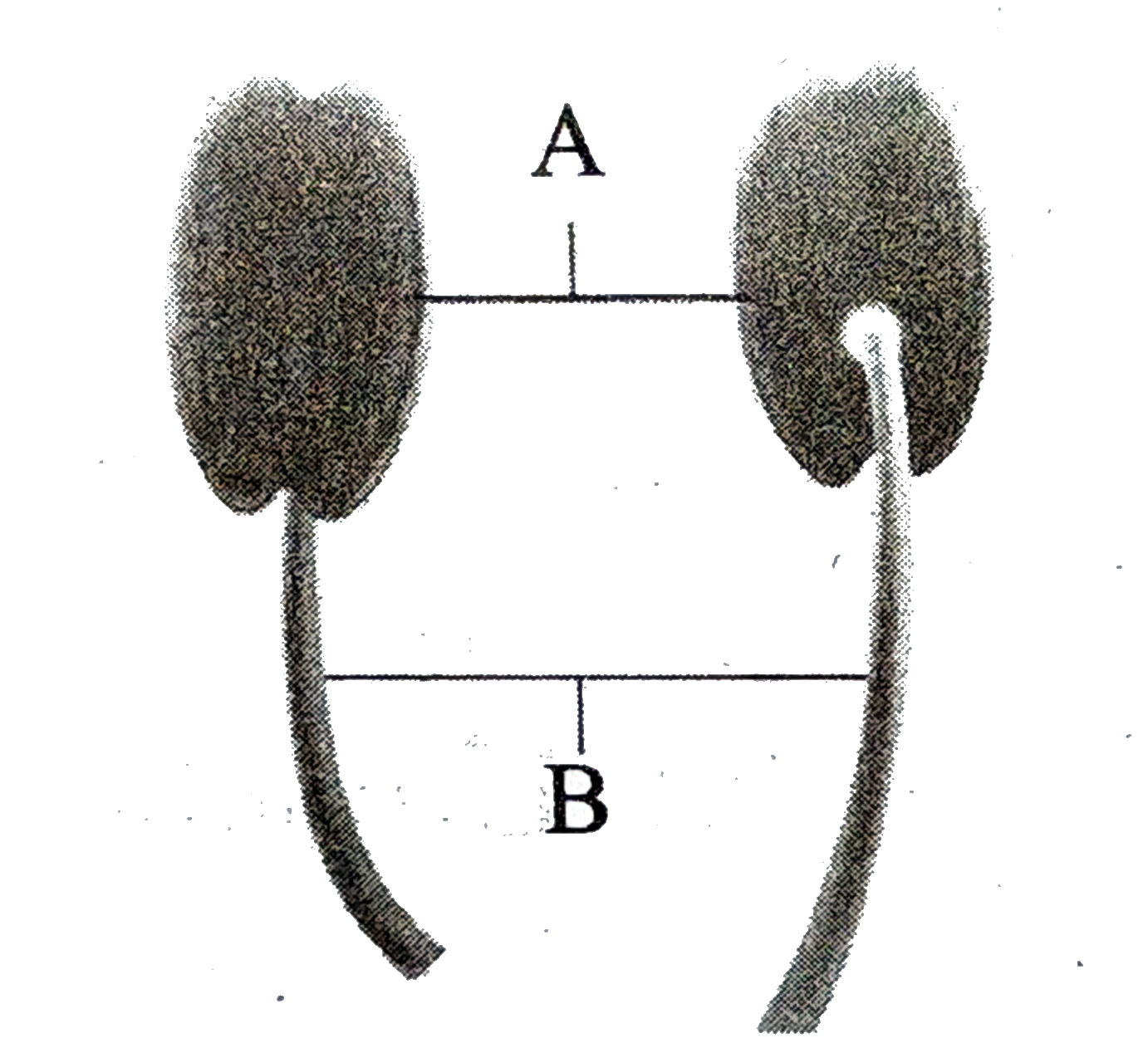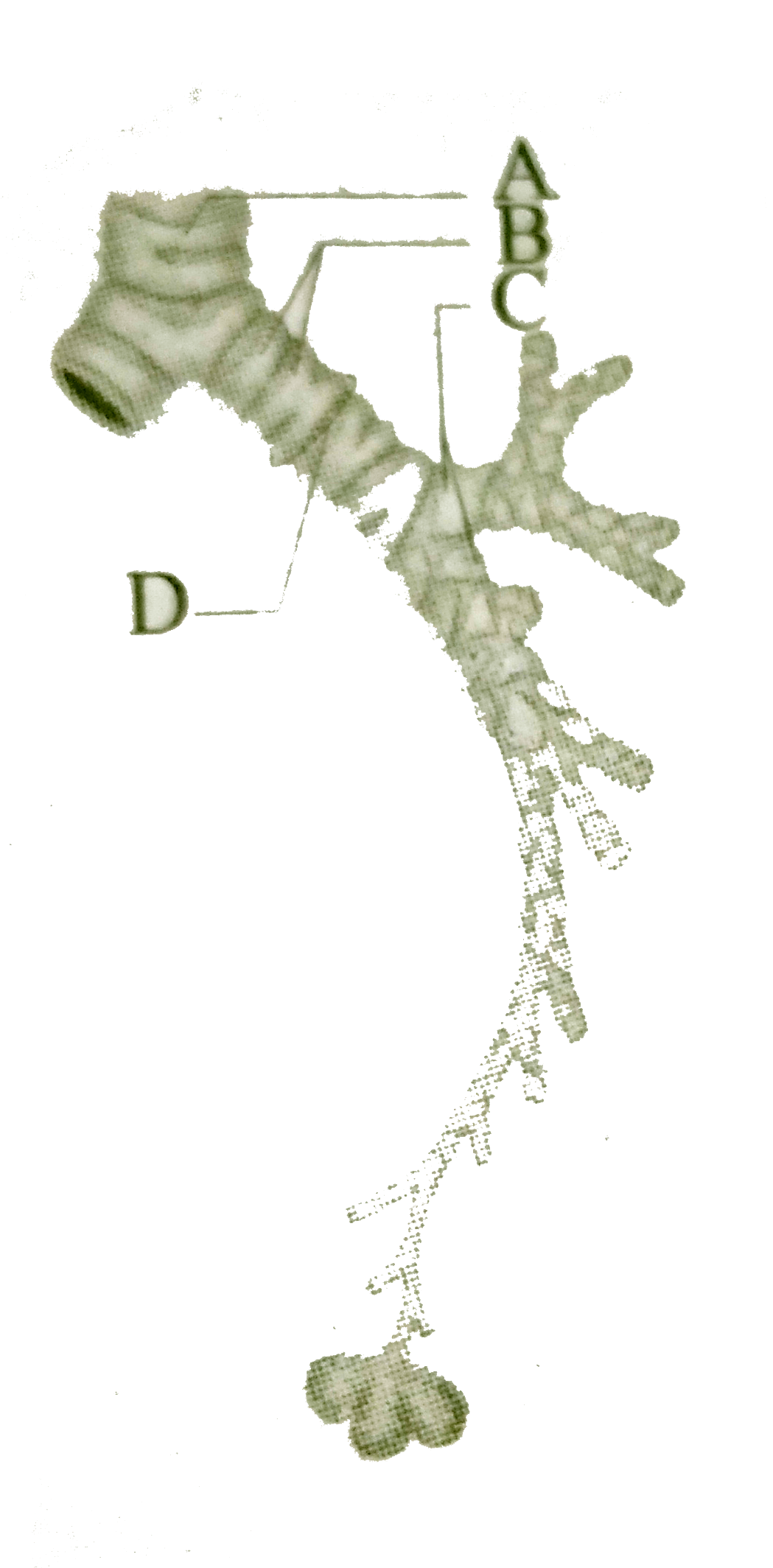(a) List two reasons for the appearance of variations among the progeny formed by sexual
(b) reproduction.
(i) Name the part marked 'A' in the diagram.
(ii) How does 'A' reaches part 'B'?
(iii) State the importance of the part 'C'.
(iv) What happens to the part marked ‘D’ after fertilization is over?
 Solution in Kannada
Solution in Kannada
(a) (i) Involvement of two different individuals.
(ii) Creation of new combination of variants.
(b) (i) pollen/pollen grain.
(ii) by pollination/agents of pollination.
(iii)It (pollen tube) helps male gamete to reach egg (ovule).
(iv) Converts into embryo.
Topper's Solved these Questions
- HOW DO ORGANISMS REPRODUCE?BOOK - OSWAAL PUBLICATIONCHAPTER - HOW DO ORGANISMS REPRODUCE?EXERCISE - TOPIC - 2 (SEXUAL REPRODUCTION IN PLANTS)(LONG ANSWER TYPE QUESTIONS)
7 Videos
- HOW DO ORGANISMS REPRODUCE?BOOK - OSWAAL PUBLICATIONCHAPTER - HOW DO ORGANISMS REPRODUCE?EXERCISE - TOPIC - 3 (REPRODUCTION IN HUMAN BEINGS)(MULTIPLE CHOICE QUESTIONS)
2 Videos
- HOW DO ORGANISMS REPRODUCE?BOOK - OSWAAL PUBLICATIONCHAPTER - HOW DO ORGANISMS REPRODUCE?EXERCISE - TOPIC - 2 (SEXUAL REPRODUCTION IN PLANTS)(SHORT ANSWER TYPE QUESTIONS - I)
7 Videos
- HEREDITY AND EVOLUTIONBOOK - OSWAAL PUBLICATIONCHAPTER - HEREDITY AND EVOLUTIONEXERCISE - NCERT CORNER TEXTBOOK EXERCISES
11 Videos
- LIFE PROCESSES BOOK - OSWAAL PUBLICATIONCHAPTER - LIFE PROCESSES EXERCISE - NCERT CORNER ( TEXTBOOK EXERCISES )
13 Videos
Similar Questions
(i) Define the terms pollination and fertilisation.
(ii) Distinguish between self pollination and cross pollination.
View SolutionFertilization of ovum in human beings takes place in :
View SolutionMention any two functions of flowers?
View SolutionA Mendelian experiment consisted of breeding tall pea plants bearing violet flowers with short pea plants bearing white flowers. The progeny all bore violet flowers, but almost half of them were short. This suggests that the genetic make up of the tall parent can be depicted as
View SolutionThe kidneys in human beings are a part of the system for
View SolutionGive two reasons for the appearance of variations among the progeny formed by sexual reproduction.
View SolutionIdentify the parts marked as A, B, C and D for the below diagram.

View SolutionIdentify the parts marked as A, B, C and D for the below diagram ''Anther dehiscence''

View SolutionIdentify the parts marked as A, B, C and D for the below diagram ''Stamen''

View SolutionIdentify the parts marked as A,B , C and D for the below diagram ''Quantasome''

View SolutionIdentify the parts marked as A, B, C and D for the below diagram

View SolutionGive two reasons for the appearance of variations among the progeny formed by sexual reproduction
View SolutionGive two reasons for the appearance of variations among the progeny formed by sexual reproduction.
View SolutionDistinguish between unisexual and bisexual flowers giving one example of each. Draw a neat diagram showing fertilisation in a flower and label: a] Pollen tube b] Male germ cell c] Female germ cell, on it. OR Draw the diagram showing the germination of pollen on stigma and label the part on which pollination takes place. Answer the following questions based on diagram given aside. i] Name the part marked 'P. in the diagram. ii] How does 'P. reach part 'B'? iii] State the importance of the part 'C'. iv] What happens to the part marked 'D' after fertilisation is over? Mention the role of gamete and zygote in sexually reproducing organisms.
View SolutionList two reasons for the appearance of variations among the progeny formed by sexual reproduction.
View Solution
